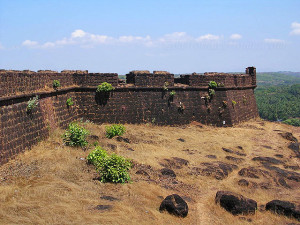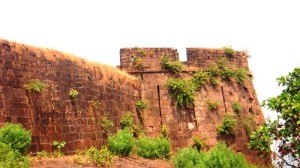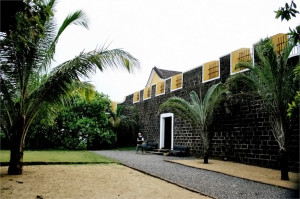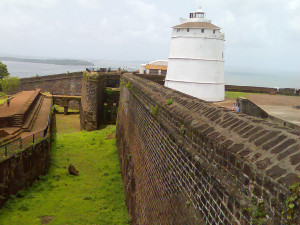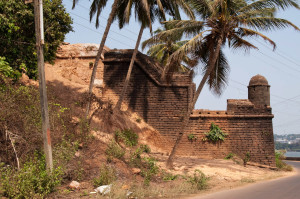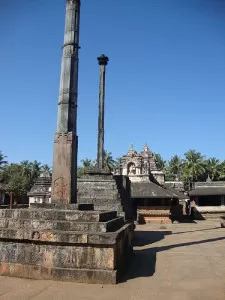The forts in Goa offer journeys into the past, when easterners and westerners fought to take over this beautiful piece of land. Be it the wonderful Portuguese architecture or the equally enchanting Indian one. With a history that speaks of several rulers, it is little wonder that one finds forts in Goa. Certain witnesses of the past, in form of forts, still remain. There are a few forts in Goa that have stood the test of time and have a lot to say of the years gone , the forts of Goa are a must see.
Chapora Fort
The Portuguese had won their rule in Goa but the threat from the Muslim and Maratha rulers went on. To protect themselves from this risk, the Portuguese built the Chapora fort in 1617. However, unlike the Aguada fort, this fort did not remain unconquered.
But this glory was not for long. As again in 1739 the Marathas captured the Chapora fort. However, two years later, in 1941, the Portuguese regained the fort when the northern taluka of Pednem was handed over to them. However, the Portuguese completely abandoned the fort In 1892. And what remains today are only ruins. Though, there isn’t much to see, the history lingers on.
Cabo de Rama
Tiracol Fort Goa
Aguada Fort Goa
“Agua” in Portuguese means water, thus the fort derived its name “Aguada” to denote a place where water is accumulated. The area around the fort housed a large well and a number of springs that provided fresh drinking water to the voyagers that arrived by ship.
An interesting feature in the majestic fort is a 13 mt high lighthouse. This lighthouse, built in 1864, initially used an oil lamp. It was later renovated and modernised in 1976. This lighthouse was home to a gigantic bell that was retrieved from amongst the ruins of the St. Augustus monastery at Old Goa. However, the bell has now been moved to the Our Lady of Immaculate Conception church at Panaji.
Though the entire fort is no longer intact, some buildings that are still in good shape have been converted into a prison. Interestingly, it happens to be the largest prison in Goa. En route to the fort, one comes across the church of St. Lawrence, the saint of the sailors. The Portuguese used to build churches on the outskirts of the forts to prevent the enemy from firing at a close range.
Mormugao Fort in Goa
This fort near the internationally famous Marmagoa Harbour was built to protect the harbour situated near the Vasco da Gama town. Its work started in 1624. It covered an area of six miles in circumference, contained towering bulwarks, three magazines, five prisons, a chapel and quarters for the guard. It had 53 guns and a garrison with 4 officers, and was an important fortress on the western coast. Unfortunately, except the chapel and a portion of the boundary wall, little is left of this fort.
Reis Magos Fort Goa
The fort was converted into a jail after the withdrawal of the Portuguese. Entry to the jail premises is restricted. However, those who get permission to visit the jail get an excellent view of the Arabian Sea. Reis Magos Church, dedicated to St. Jerome, is just below the walls of the fort. What make the fort more attractive are its black bastions.
Cabo Fort Raj Bhavan
An imposing structure stands opposite the Aguada fortress; this is the Cabo Palace Fortress, or the Cabo Raj Bhawan. Supposed to be built in 1540, this fort is amongst the most beautiful Portuguese architectures in Goa and was used for guarding the coast in the past. The fort also has a convent made for the Franciscans and a chapel dedicated to our Virgin Lady of The cape (Nossa Senhora do Cabo), built at the end of the site, providing a landmark for the seafarers in the olden days.
Now, the fort is the official Residence of the Governor of Goa and visits are only possible through special appointment.

